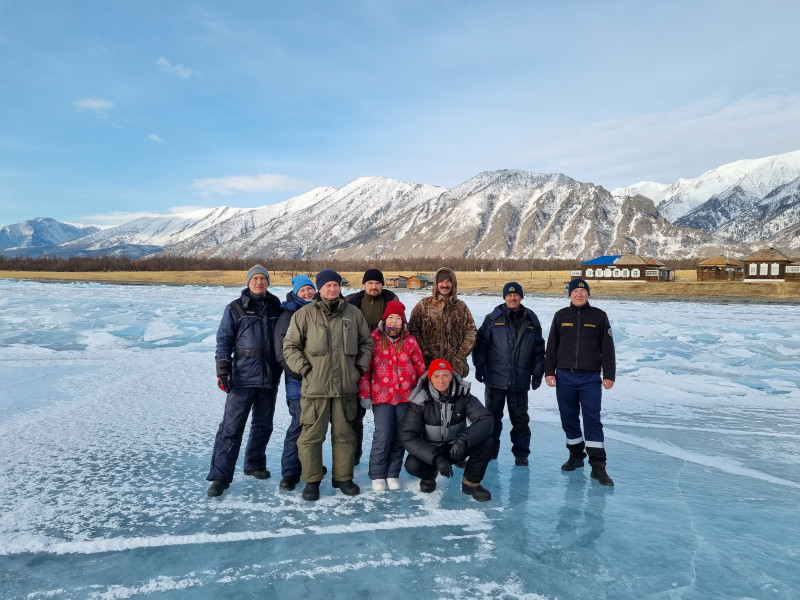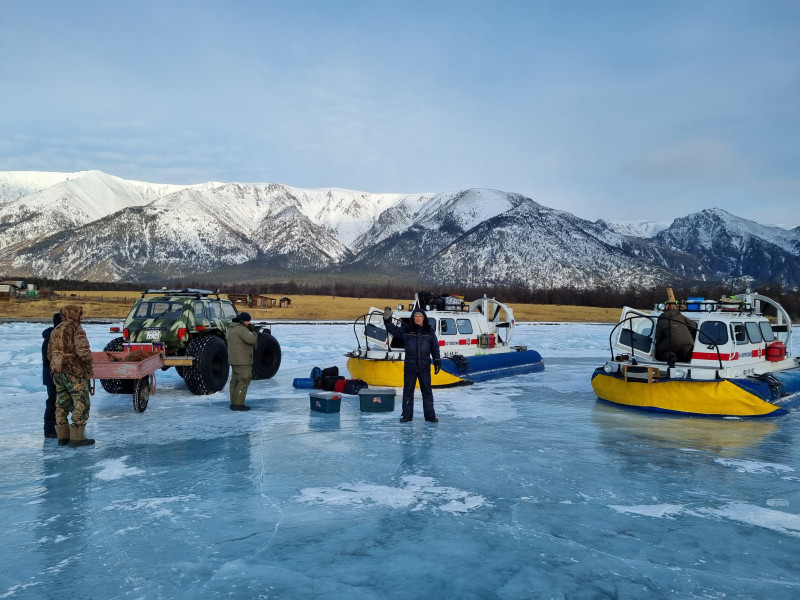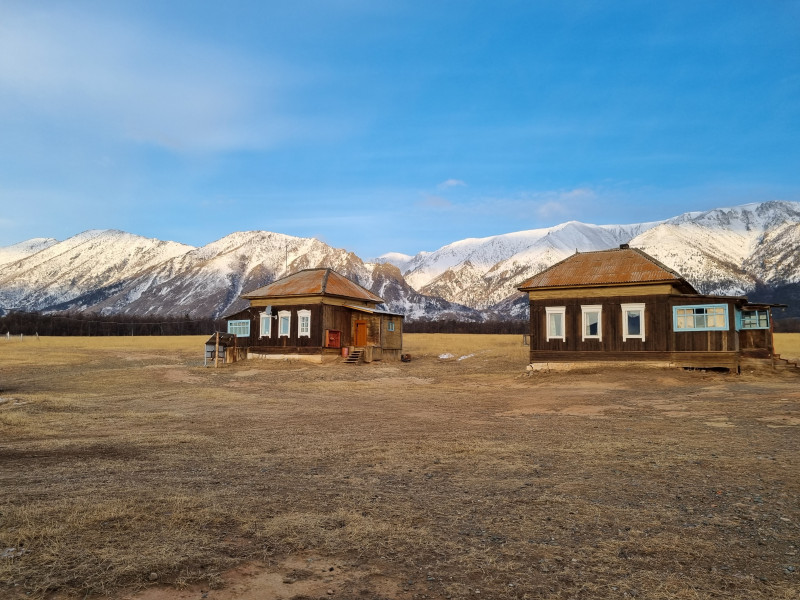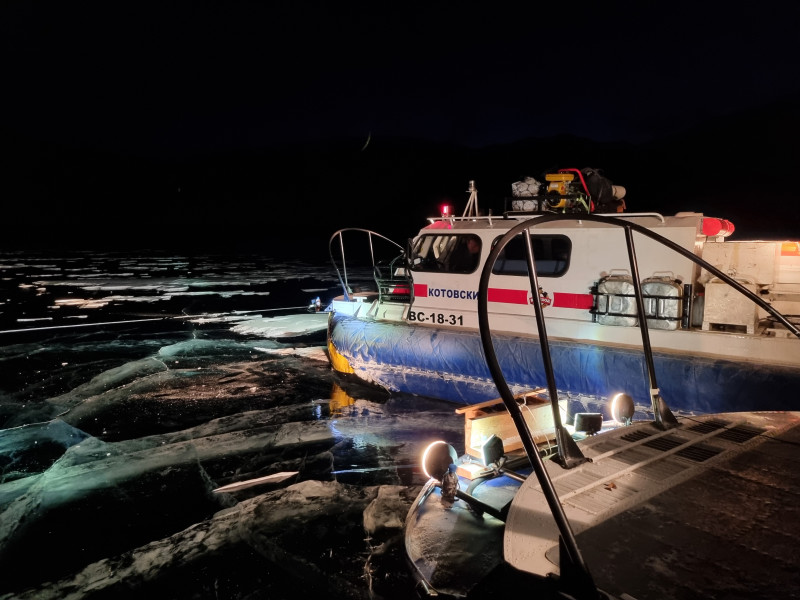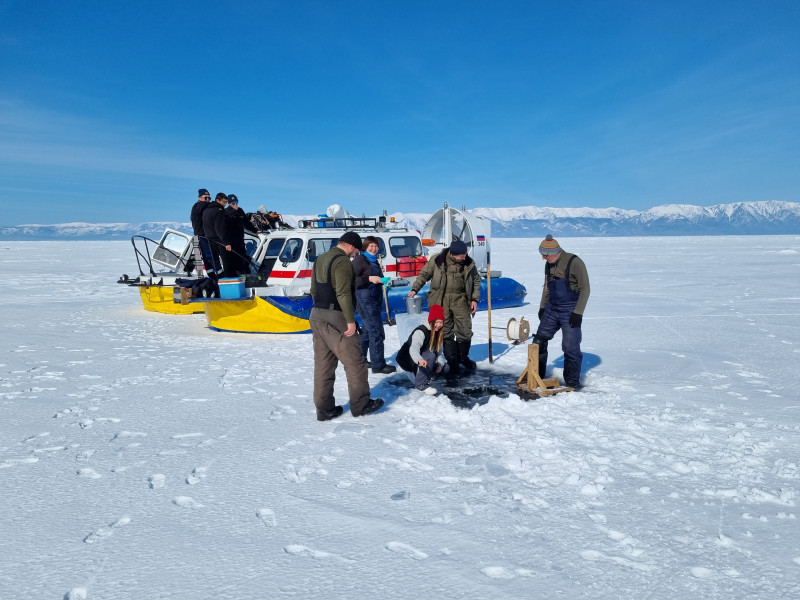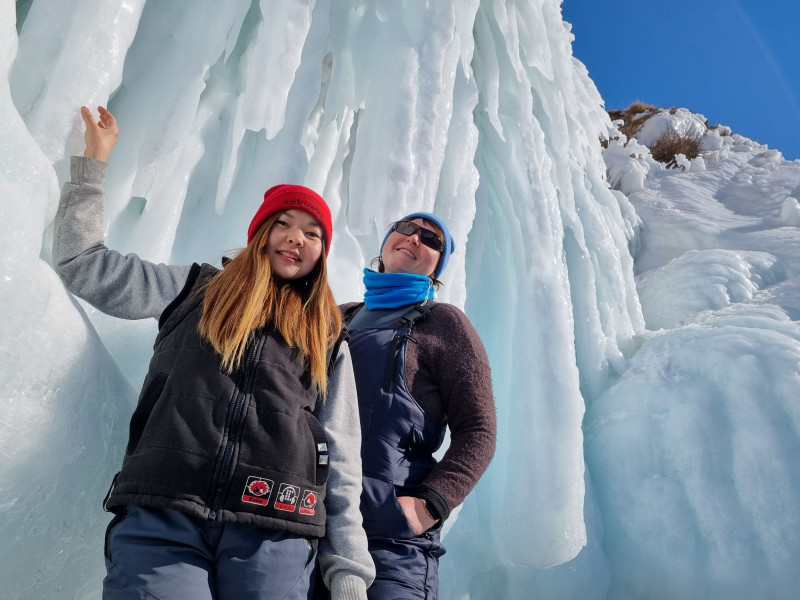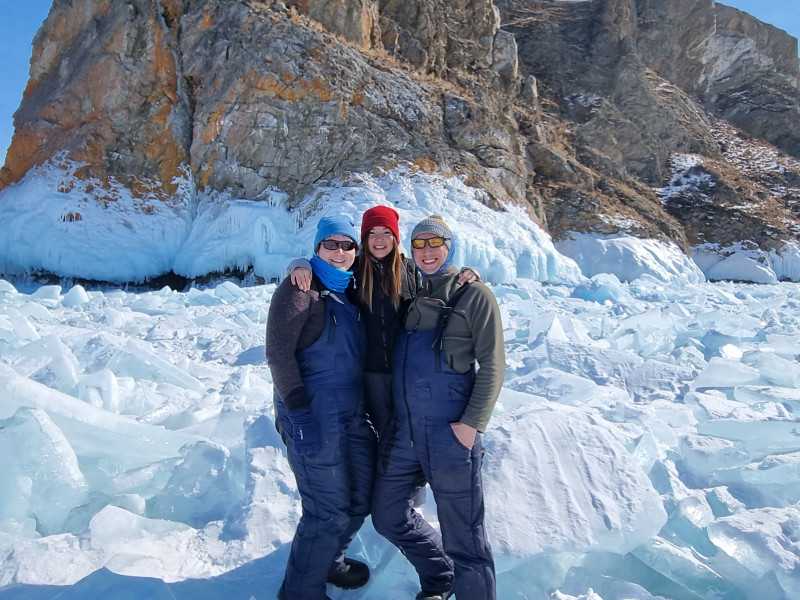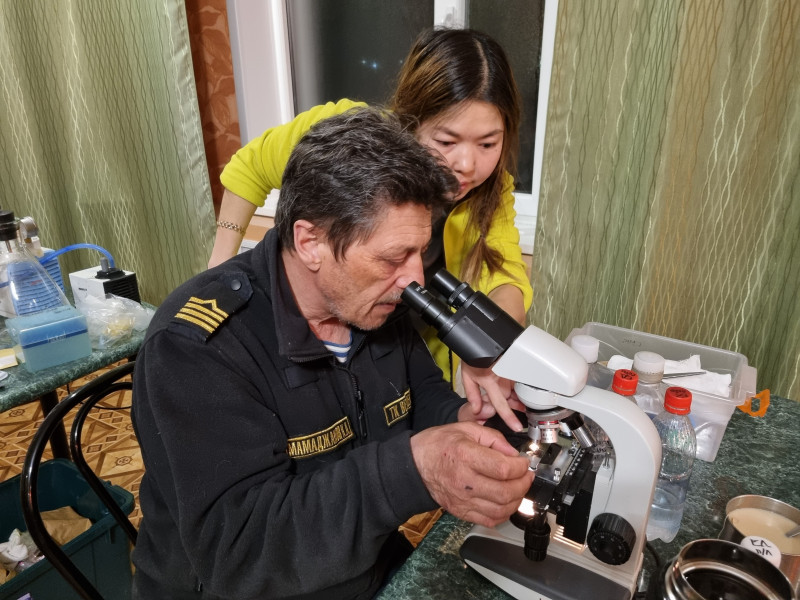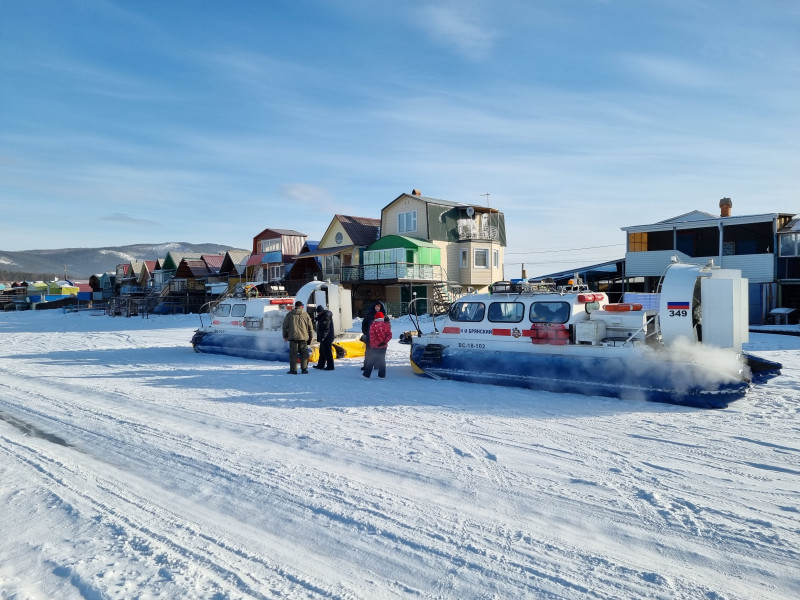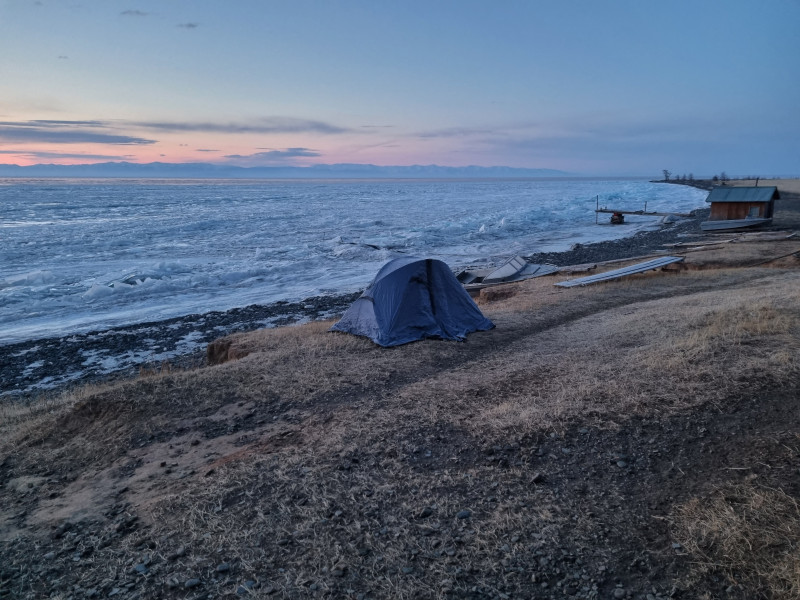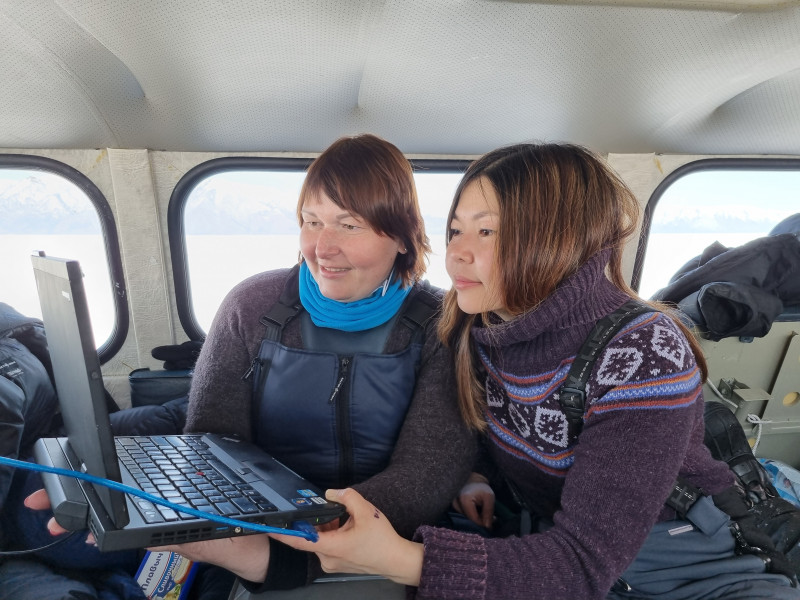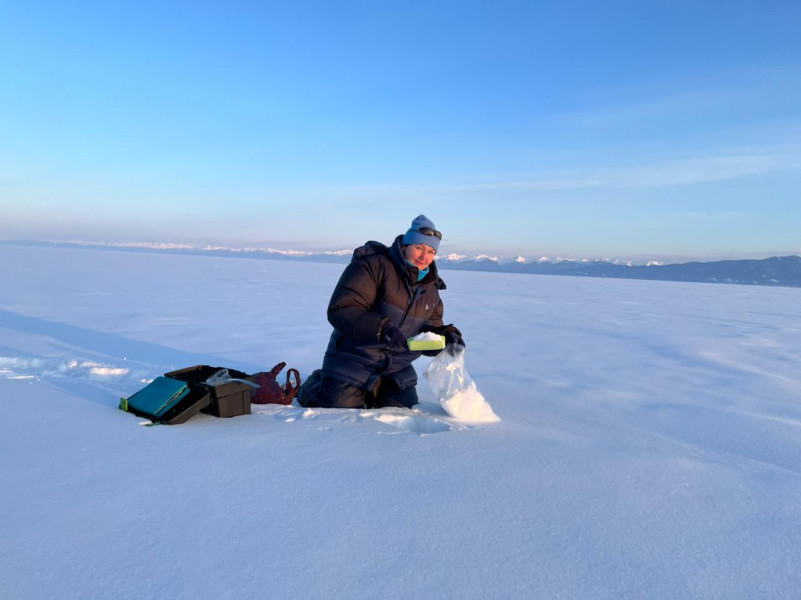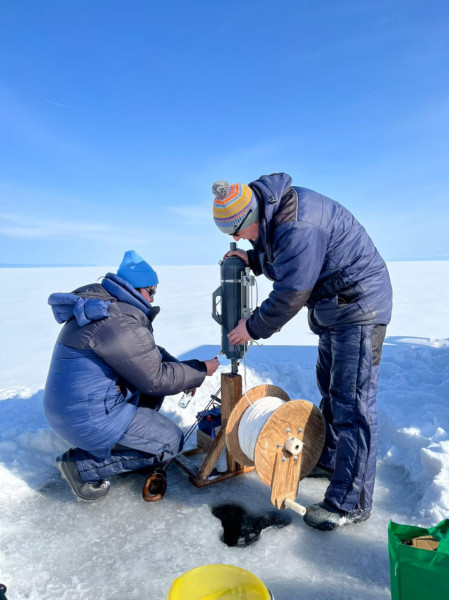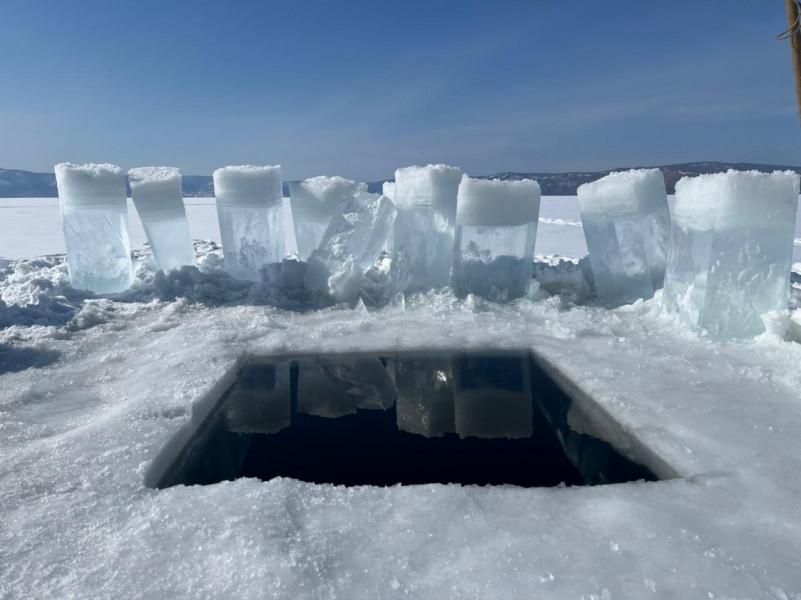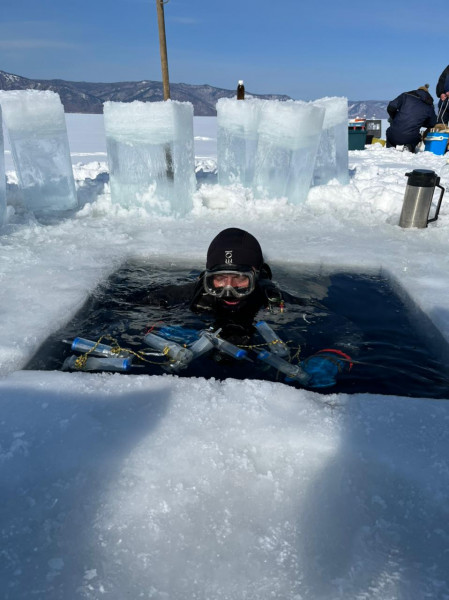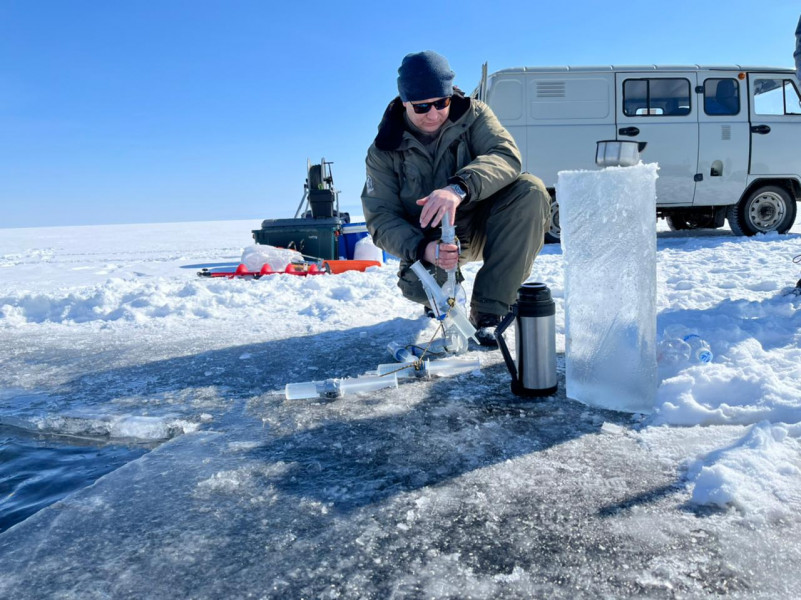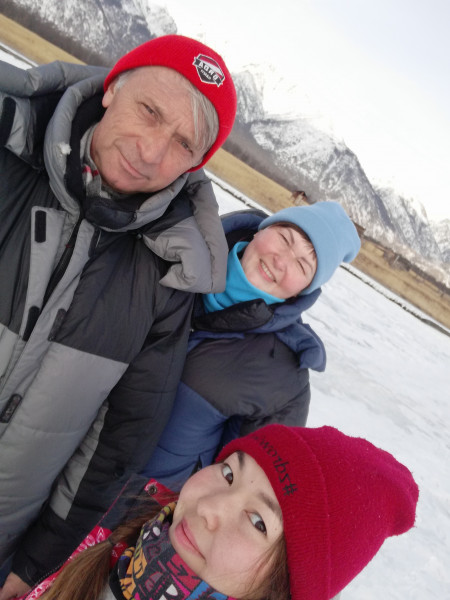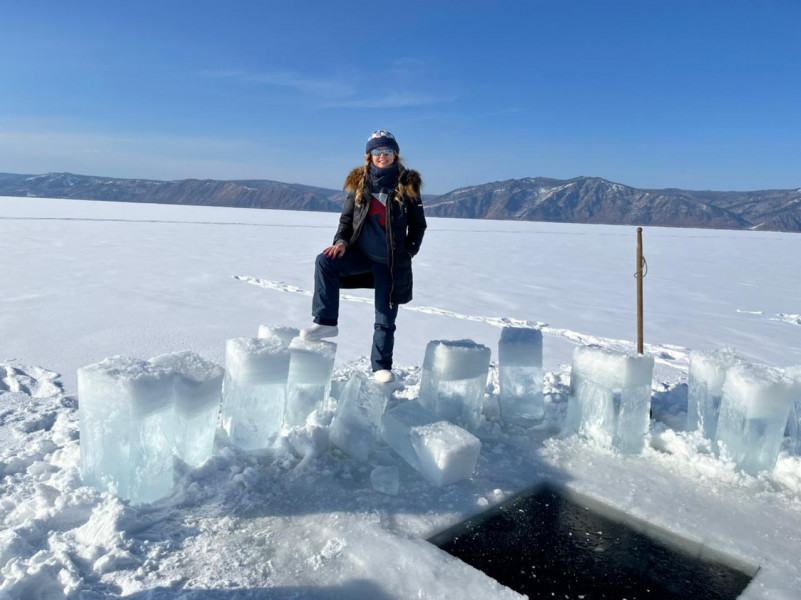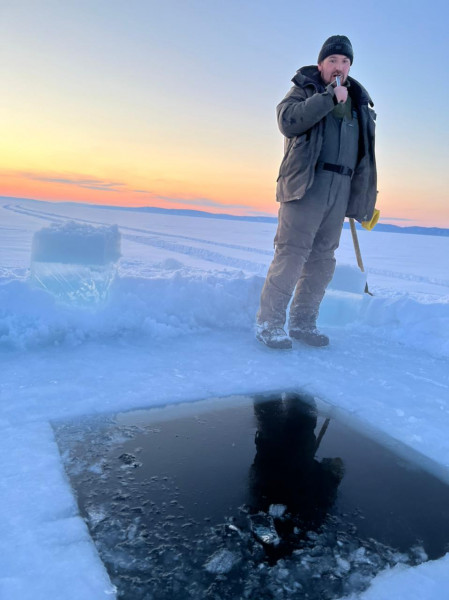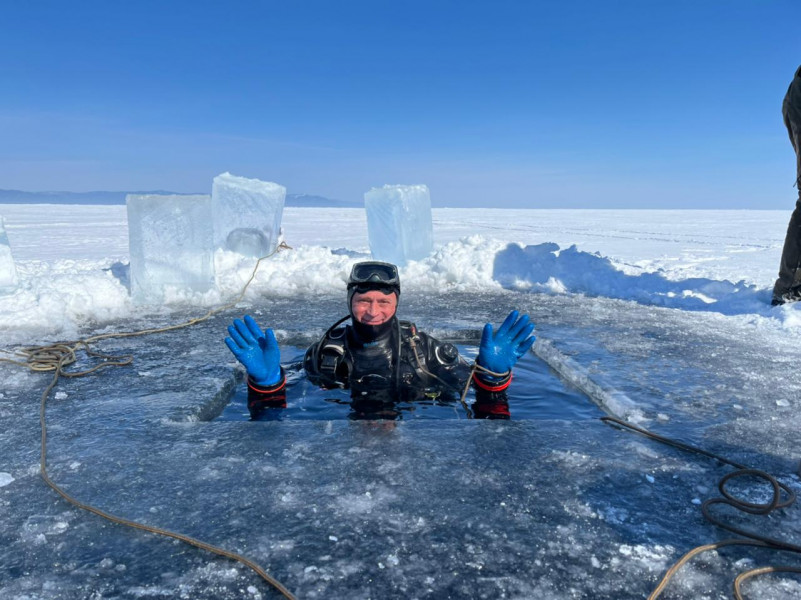Ice expedition on March 17-24, 2022
The aim of expedition was the resumption of the complex ice studies in order to determine the dynamics of biogenic elements, dissolved gases, quantitative and qualitative indicators of phytoplankton in the Baikal during the ice period, as well as vertical profiles of the hydrophysical characteristics.
Within the expedition, we covered more than 1200 km along of Lake Baikal. The fieldworks were carried out at 15 central stations along the longitudinal cut of the lake: 12 km from Kultuk, Marituy - Solzan, Listvyanka - Tankhoy, cape Kadilny – Mishikha, Krasny Yar - Kharauz, Anga - Sukhaya, Ukhan - Tonkiy, cape Khoboy – cape Krestovy, the Academic ridge, cape Elokhin - Davsha, Baikalskoe - Turali, Kotelnikovsky - Amnundakan, Tyya - Nemnyanka, Solnechnaya – the Ushkany islands, Maloe More (center).
The 100 water samples were taken from various depths of 0, 5, 10, 15, 25, 50, and 100 meters, as well as samples of snow. The pH value varied from 8.08 to 7.70.
Algae and bacterial communities attached to ice cover were collected by divers. For qualitative phytoplankton analysis, the samples were collected using the Apstein net. According to the results of the primary microscopic analysis, the algae abundant was low. The diatoms Ulnaria acus were the most common in the water column, except the Tyya-Nemnyanka station, where the chrysophytes Dinobryon cylindricum was predominate. Green algae and dinoflagellates G. baicalens developed mostly on the lower surface of the ice.
The vertical hydrophysics profiles was carried out with a multi-parameter sensor JFE Rinko AAQ-177 to the upper 100 m depth. The data showed a vertical profile of temperature and other parameters were typical to the winter distribution. The maximum mixed layer (up to a depth of 60 meters) was registered at the central station Kotelnikovsky – Amnundakan, while the shallowest thermocline occurrence in 25 m was found in the middle of the Tyya-Nemnyanka profile.
We also measured the ice thickness using the “Picor-Ice” radar detector. Thus, the minimum ice thickness (43 cm) was observed in South Baikal, and the maximal in 1.2 m in North Baikal. However, in some areas of the ice field (closed cracks, hummocks), the ice thickness could reach 2 meters.




